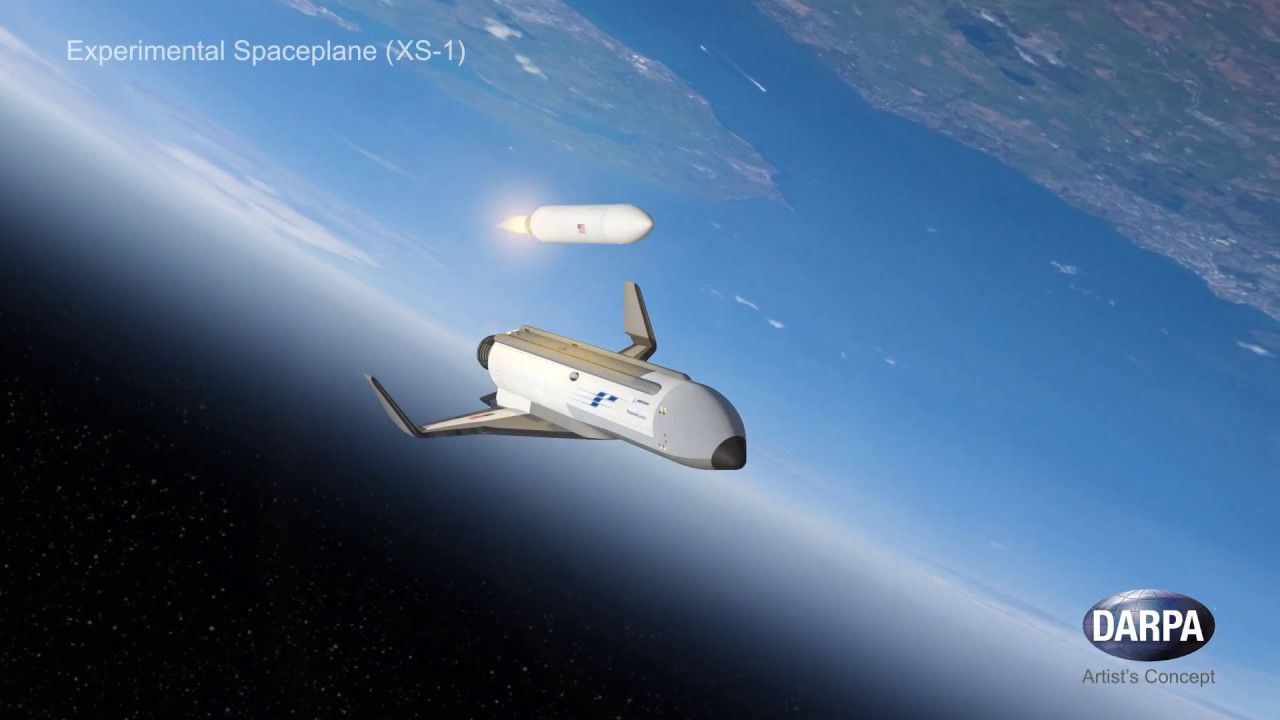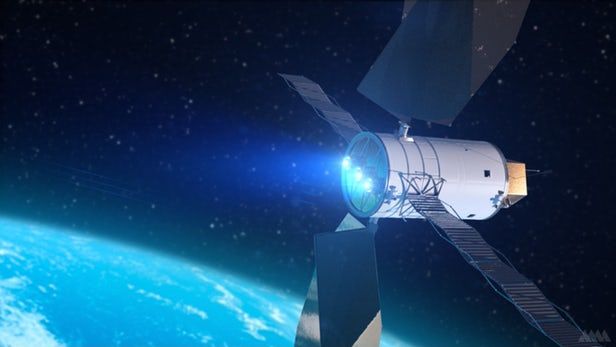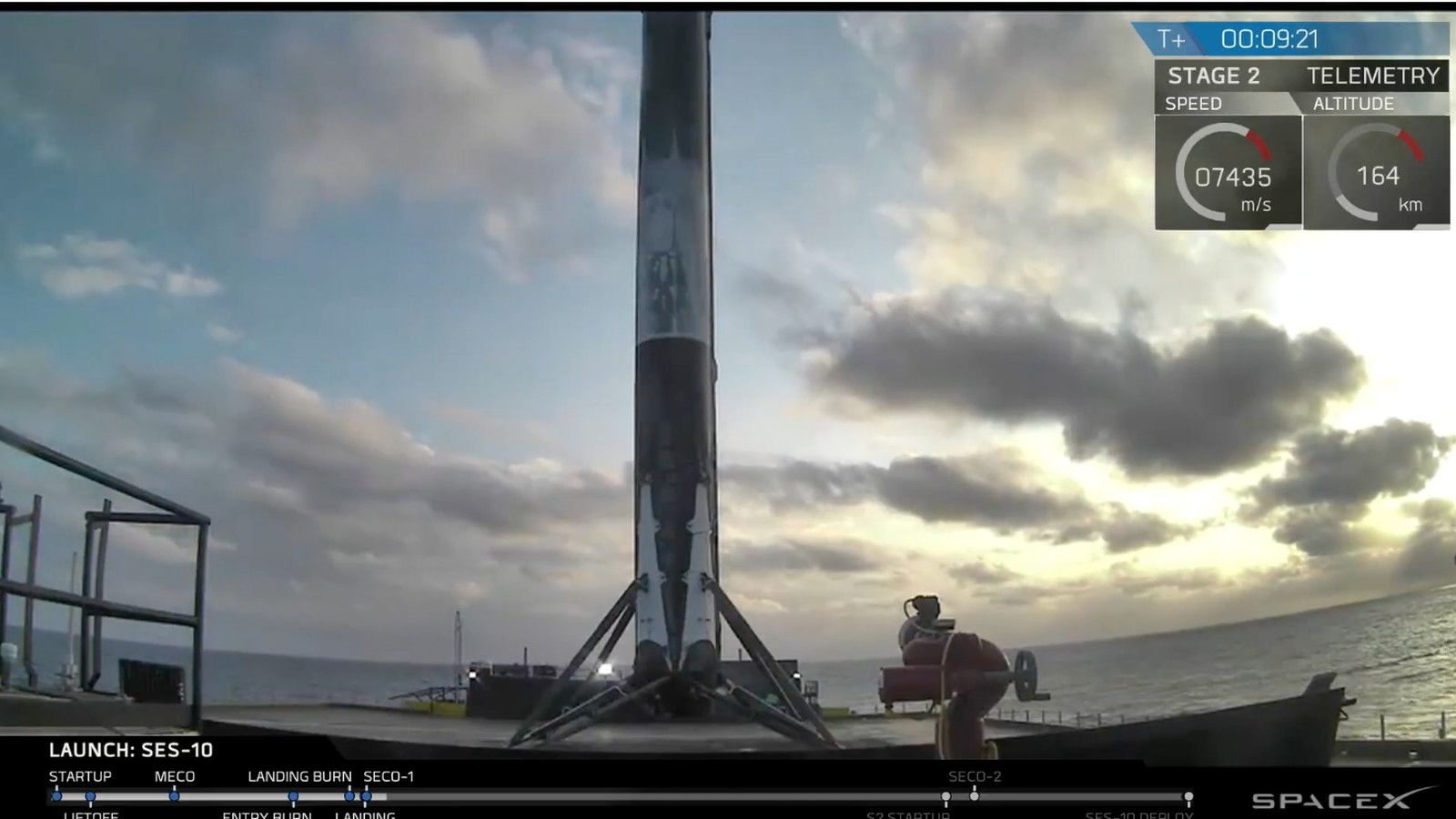Archive for the ‘satellites’ category: Page 173
May 25, 2017
The Rocket Startup That’s About to Eat Elon Musk’s Lunch
Posted by Dan Kummer in category: satellites
Rocket Lab is aiming to put small satellites in low Earth orbit at a fraction of the cost of even SpaceX.
With its Thursday announcement of a successful launch of the Electron rocket, a small New Zealand start-up changed the private space race.
May 25, 2017
DARPA Picks Boeing To Build Its New Space Plane
Posted by Dan Kummer in categories: military, satellites

The research agency hopes its XS-1 jumpstarts a whole new industry of very-low-cost satellite launches.
Boeing did such a good job plotting out the commercial future of a reusable satellite-launching plane that they’re going to get to build it — and just maybe, launch a whole new low-cost satellite industry.
Continue reading “DARPA Picks Boeing To Build Its New Space Plane” »
May 5, 2017
Elon Musk’s SpaceX plans to send the first of its 4,425 super-fast internet satellites into space in 2019
Posted by Simon Waslander in categories: Elon Musk, internet, satellites
Elon Musk’s SpaceX plans to start launching satellites into orbit in 2019 to provide high-speed internet to Earth.
In November, the company outlined plans to put 4,425 satellites into space in a Federal Communications Commission (FCC) filing. But the document gave little detail on the timeline.
However on Wednesday, Patricia Cooper, SpaceX’s vice president of satellite government affairs, said later this year, the company will start testing the satellites themselves, launch one prototype before the end of the year and another during the “early months“ of 2018. Following that, SpaceX will begin its satellite launch campaign in 2019.
Apr 21, 2017
One Big Question: What will space exploration look like in 2040?
Posted by Klaus Baldauf in categories: futurism, satellites
The 33rd annual Space Symposium wrapped up recently in Colorado and New Atlas was on hand to check out some of the exhibits and talks. Amidst the rocket models, jet engines and satellites, we found a quiet corner to sit down with Scott Fouse, the vice president of Lockheed Martin’s Advanced Technology Center. For our One Big Question series, we wanted to get his thoughts on what reaching for the stars will look like in the future, so we asked him: What will space exploration look like in 2040?
Apr 20, 2017
NASA puts $50M into creating fusion thrusters, space robots and much more
Posted by Klaus Baldauf in categories: business, robotics/AI, satellites

Fusion-driven rockets, remote control systems for space robots, and satellites that build themselves up in orbit are among the made-in-Washington projects getting a share of $49.9 million in NASA grants.
Seven businesses in Washington state will benefit from NASA’s latest round of Small Business Innovation Research grants and Small Business Technology Transfer grants, announced today.
Apr 10, 2017
How 3D printing is changing the future of the space industry
Posted by Brett Gallie II in categories: 3D printing, internet, satellites
In aerospace, parts are complicated, and manufacturing them can be very expensive and time consuming. When rocket engine parts can take up to a year to make, it is very difficult to start a new rocket company and for aerospace companies to be cost effective, innovative and nimble.
These barriers to entry are why you don’t see many start-up space companies and why the industry has relied on the same basic engine designs as those built during the Apollo program.
3D printing is changing all that. At Virgin Orbit, we are building a rocket system that will send small satellites into orbit. We aim to open access to space for small satellites to improve life on earth through services such as internet connectivity to the under connected and data for planning, production, disaster mitigation etc.
Continue reading “How 3D printing is changing the future of the space industry” »
Apr 9, 2017
Innovation in the Bay Area: Q&A with Nidhi Kalra
Posted by Dan Kummer in categories: biotech/medical, cybercrime/malcode, drones, education, life extension, policy, robotics/AI, satellites
For people in that area, and it may be worth while to try reaching out to them for funding for anti aging stuff.
Why is RAND opening a Bay Area office?
The San Francisco Bay Area is really at the center of technology and transformation. That’s also been a focus at RAND since our very first report, Preliminary Design of an Experimental World-Circling Spaceship, in 1946, which foretold the creation of satellites more than a decade before Sputnik.
Continue reading “Innovation in the Bay Area: Q&A with Nidhi Kalra” »
Mar 31, 2017
SpaceX makes aerospace history with successful launch and landing of a used rocket
Posted by Shailesh Prasad in categories: drones, Elon Musk, satellites
After more than two years of landing its rockets after launch, SpaceX finally sent one of its used Falcon 9s back into space. The rocket took off from Cape Canaveral, Florida, this evening, sending a communications satellite into orbit, and then landed on one of SpaceX’s drone ships floating in the Atlantic Ocean. It was round two for this particular rocket, which already launched and landed during a mission in April of last year. But the Falcon 9’s relaunch marks the first time an orbital rocket has launched to space for a second time.
SpaceX CEO Elon Musk appeared on the company’s live stream shortly after the landing and spoke about the accomplishment. “It means you can fly and refly an orbital class booster, which is the most expensive part of the rocket. This is going to be, ultimately, a huge revolution in spaceflight,” he said.
Mar 31, 2017
ARCA Unveils the World’s first Single-Stage-to-Orbit Rocket
Posted by Klaus Baldauf in categories: robotics/AI, satellites

Since the beginning of the Space Age, scientists have relied on multi-stage rockets in order to put spacecraft and payloads into orbit. The same technology has allowed for missions farther into space, sending robotic spacecraft to every planet in the Solar System, and astronauts to the Moon. But looking to the future, it is clear that new ideas will be needed in order to cut costs and expand launch services.
Hence why the ARCA Space Corporation has developed a concept for a single-stage-to-orbit (SSTO) rocket. It’s known as the Haas 2CA, the latest in a series of rockets being developed by the New Mexico-based aerospace company. If all goes as planned, this rocket will be the first SSTO rocket in history, meaning it will be able to place payloads and crew into Earth’s orbit relying on only one stage with one engine.
Continue reading “ARCA Unveils the World’s first Single-Stage-to-Orbit Rocket” »















